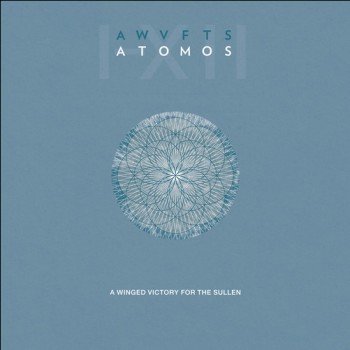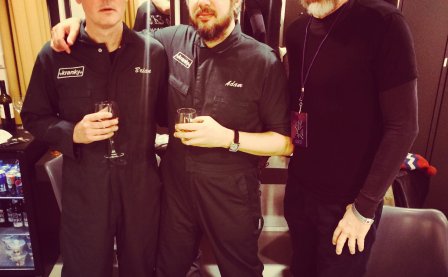British choreographer Wayne McGregor is known for opening up his artistic process to ideas and methods of science. The Random Dance director has collaborated with experimental psychologists and cognitive scientists on the development of his pieces, and used heart imaging and other cutting-edge technologies to spur creation. McGregor is also known for working with a range of en vogue composers and artists who hover somewhere near the line between classical and more commercial genres, from Max Richter and Nico Muhly to Jon Hopkins and Ben Frost. McGregor’s choreography for Thom Yorke — exhibited in the videos for Radiohead’s “Lotus Flower” and Atoms For Peace’s “Ingenue” — has received more than 30 million YouTube views.
For the music for his full-length piece Atomos, which premiered in London around this time last year, McGregor commissioned an original score from A Winged Victory for the Sullen, the duo of post-classical composer Dustin O’Halloran and Stars of the Lid’s Adam Wiltzie.
McGregor’s Atomos was inspired by the film Blade Runner, and the idea of indivisibility — of taking core bits of data (a single frame from the film, let’s say) and using that as the starting point for creation. Through a rather complicated process, McGregor and his dancers also used biometric measurements — measurements of stress levels, for example, or levels of arousal — as input in their choreography, taking inspiration from an artificial intelligence program that generated movements based on information gathered from Blade Runner and output to a kinetic mantis-like figure on a 3D screen.
While McGregor’s piece was, at least in its conception, influenced by science, A Winged Victory for the Sullen’s complementary score has an almost religious tenor — its primary effects are those of awe and mystification. And while McGregor’s choreography was inspired by constituent, seed-like parts, A Winged Victory’s music — just released as the duo’s official full-length follow-up to their 2011 self-titled debut — defies atomization. It’s comprised of 11 tracks, dense and monolithic, that rarely move quicker than a crawl. The hum of organs and nocturnal drones idly enshroud these songs. Bowed notes from stringed instruments circle, rise, and fall. Simple, beautiful melodies radiate from struck piano cords. And once or twice, an atmosphere of paranoia surfaces in the form of anxious synths or dystopian vocal chatter.
Atomos diverges from O’Halloran and Wiltzie’s self-titled debut in at least a few ways. The contexts and creative processes of these two albums seem to have been quite different. Work on A Winged Victory for the Sullen lasted about two years, while creating the music for McGregor’s production demanded a significantly tighter timeframe. (According to this interview, O’Halloran and Wiltzie were tasked with producing more than an hour of music in about three months.) Also, Atomos is, to my ears, a more uneven offering than the debut, lacking the gem-like balance of its predecessor. The upside is that Atomos is perhaps a more challenging listen, featuring a broader sonic palette that contains more distinct highs and lows, both of mood and of merit.
When Wayne McGregor’s Atomos received its US debut last spring, the program notes focused on the bodies of the dancers as the site of communal and emotional interaction — of “awareness of others, empathy, memories of our entwined lives.” Watching the piece, however, I had a keen sense — no doubt influenced by A Winged Victory’s solemn score — that each dancer was, at heart, alone. But listening to this music on my own, I sometimes have the opposite reaction, where Atomos’s grandest, prettiest moments elicit a rushing, expansive feeling of connection.
More about: A Winged Victory for the Sullen




